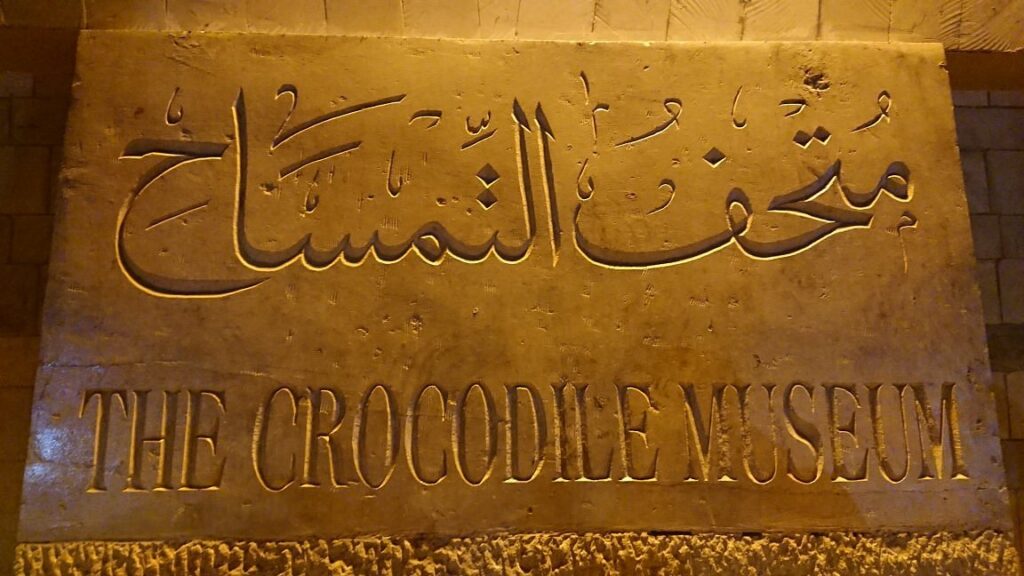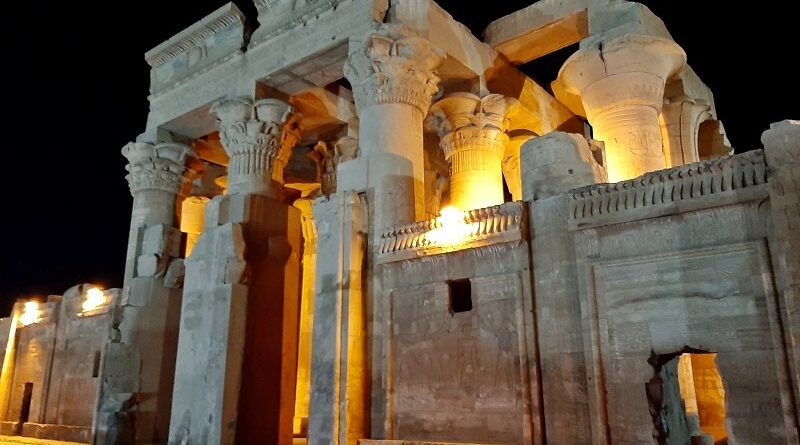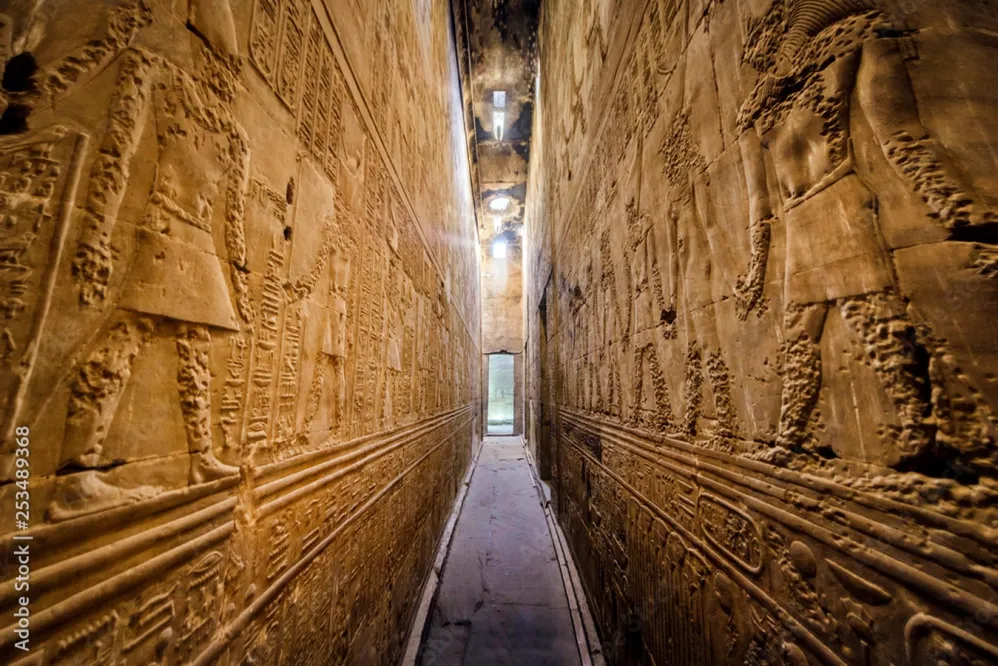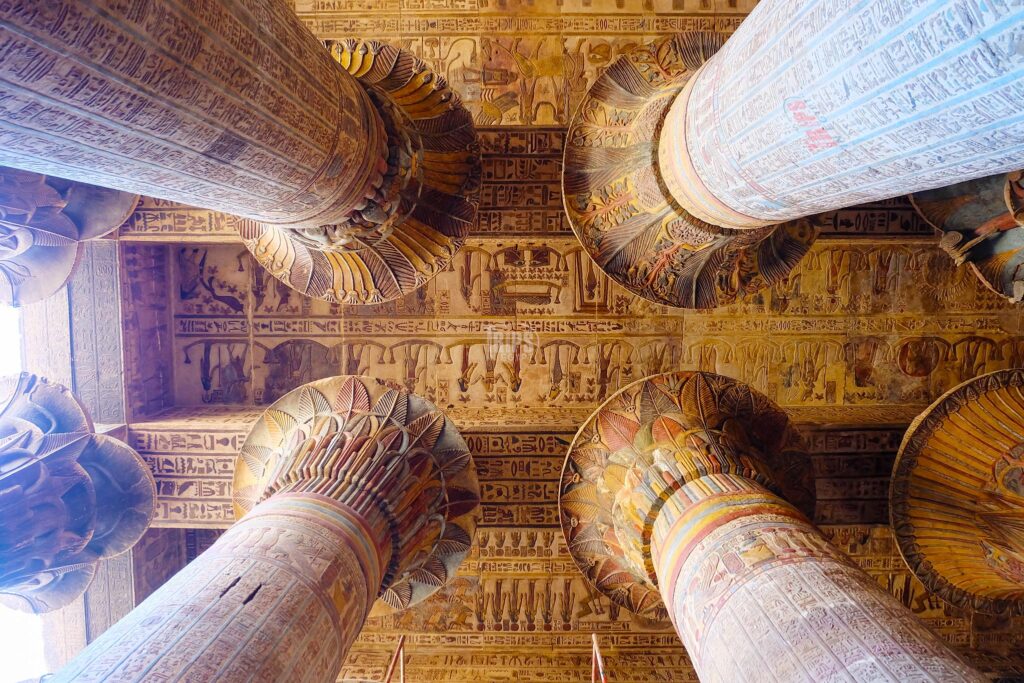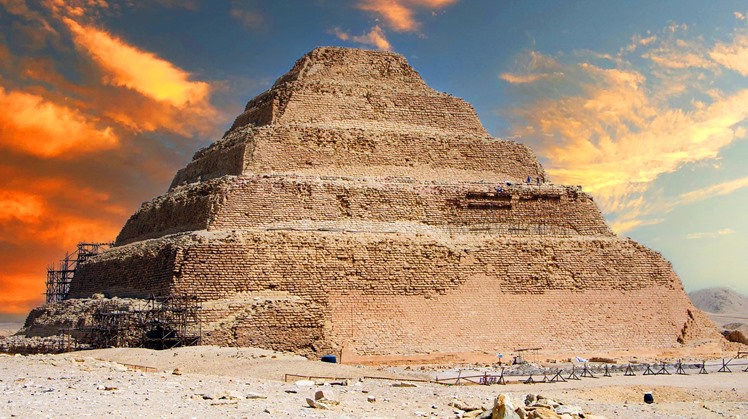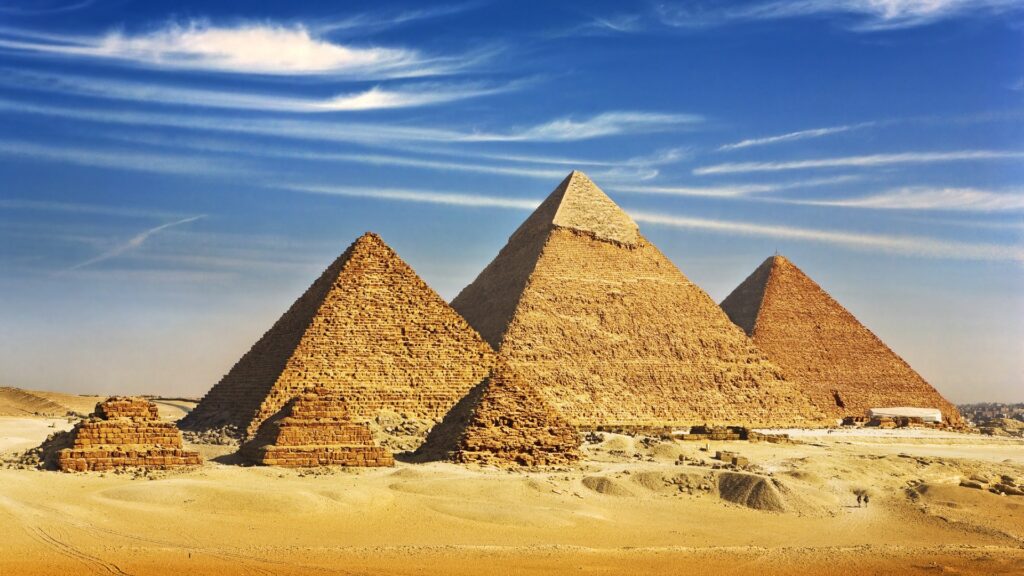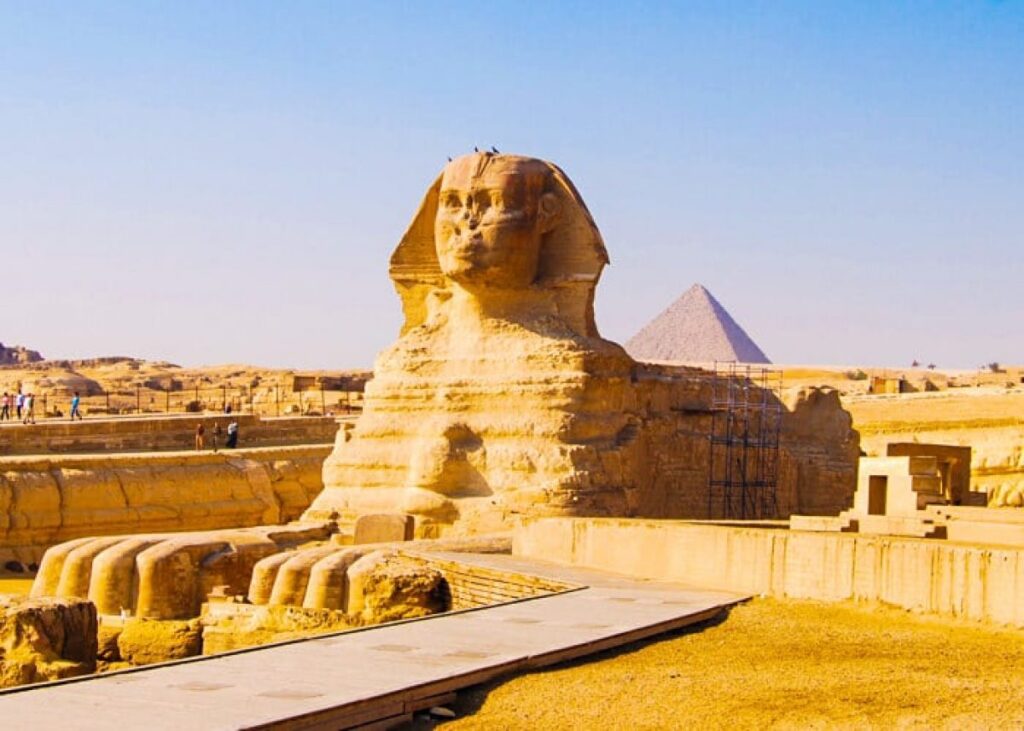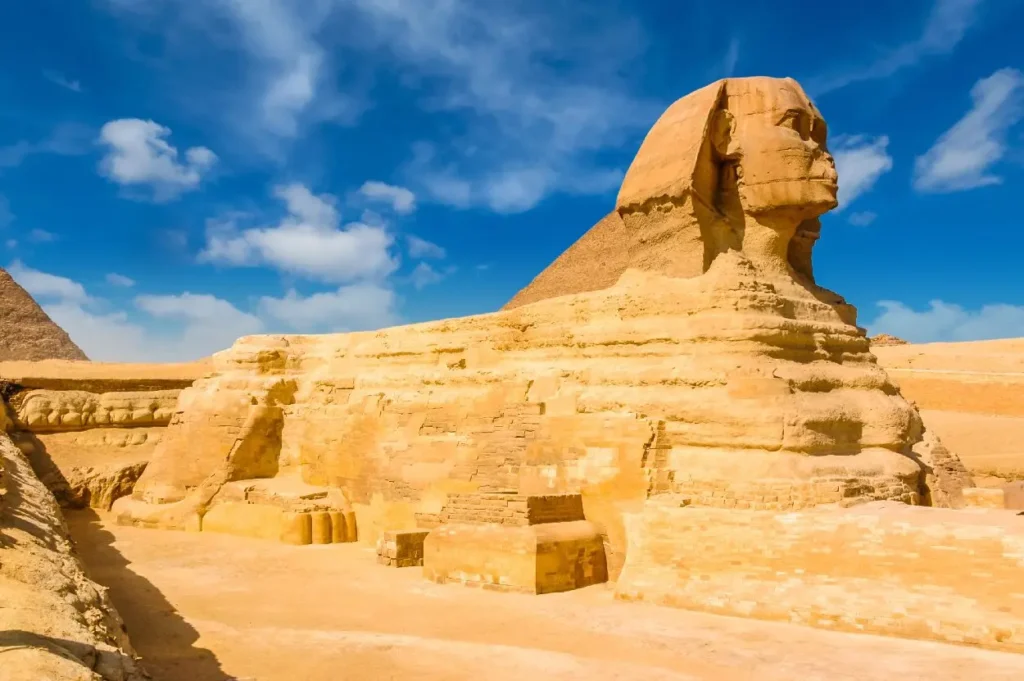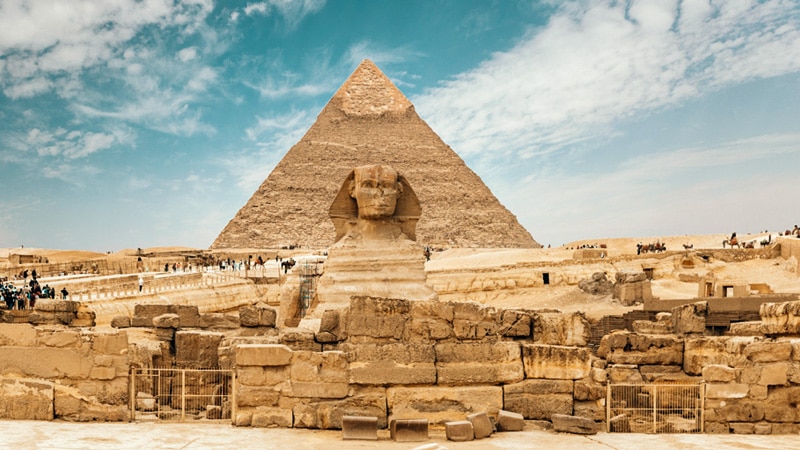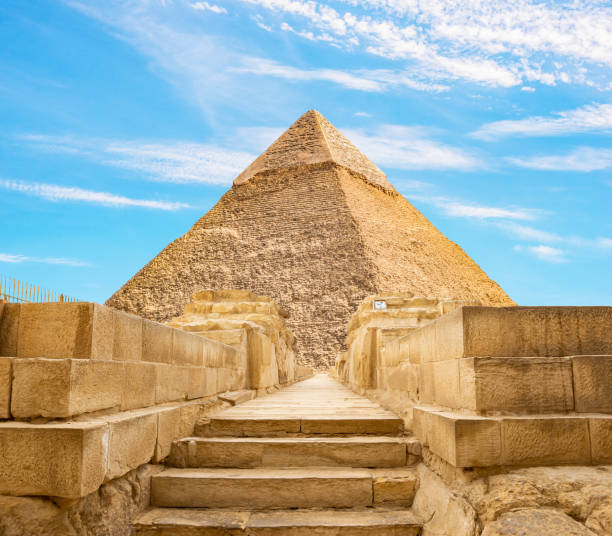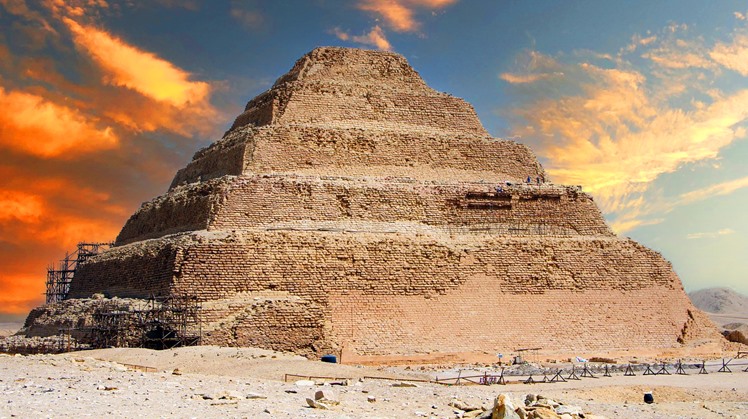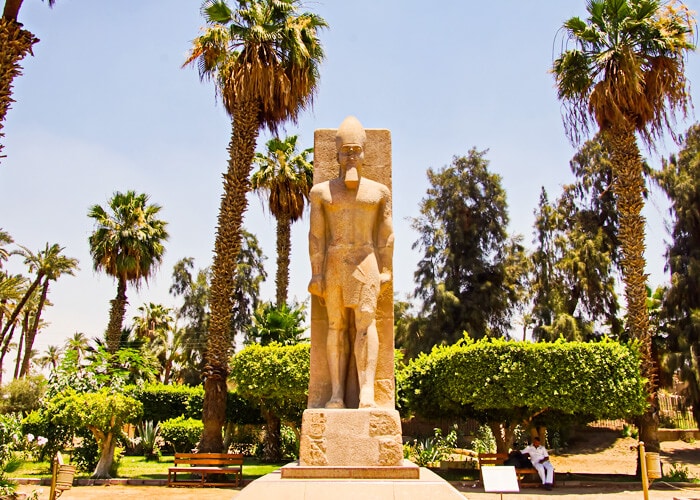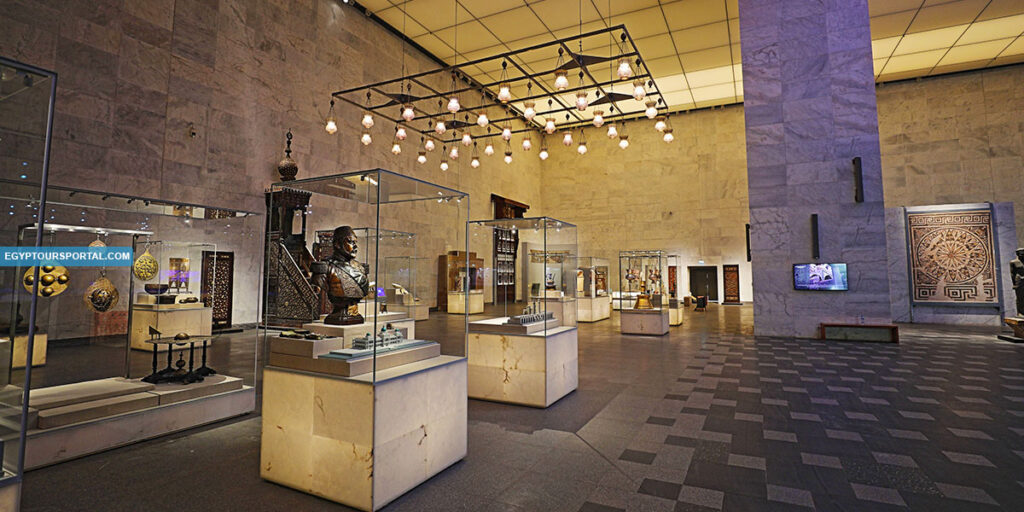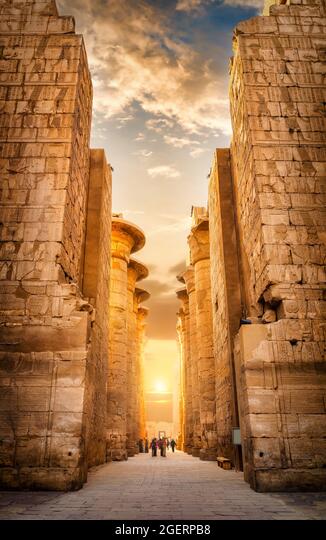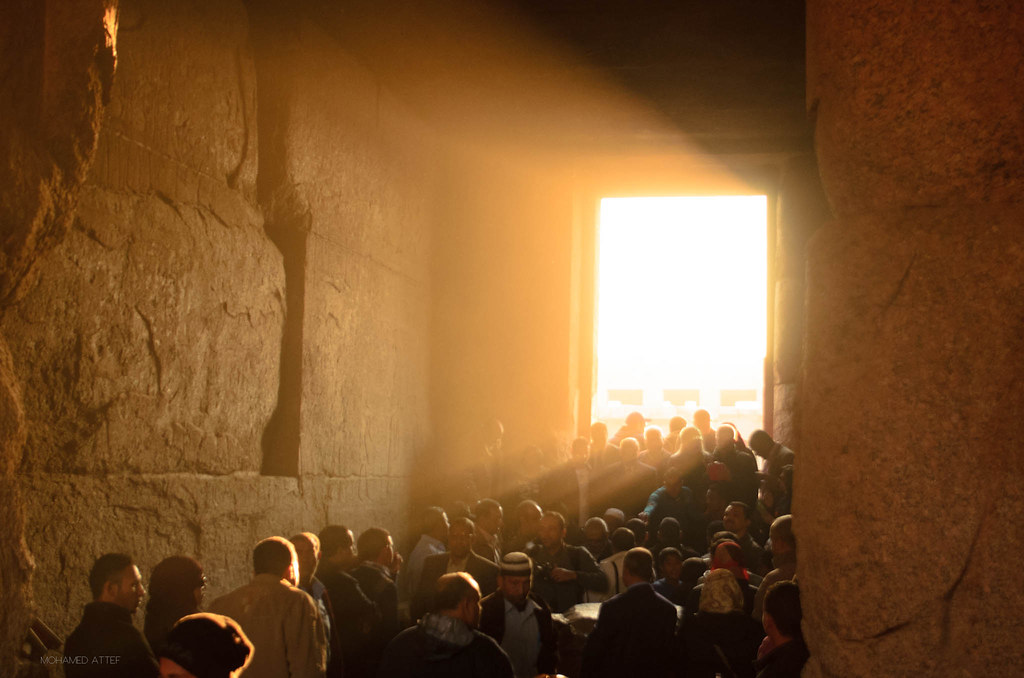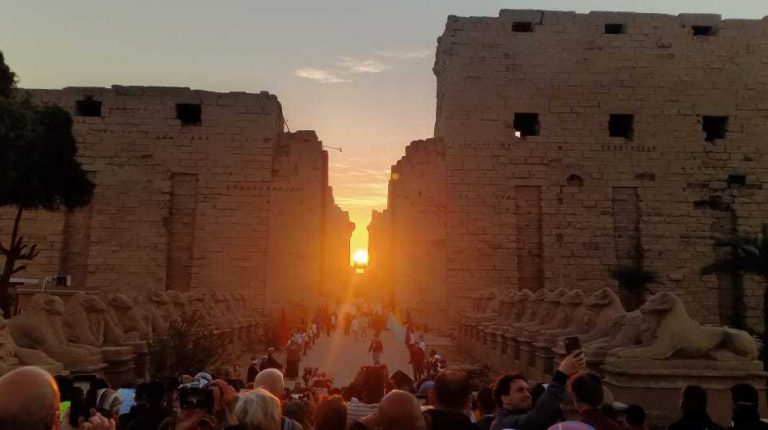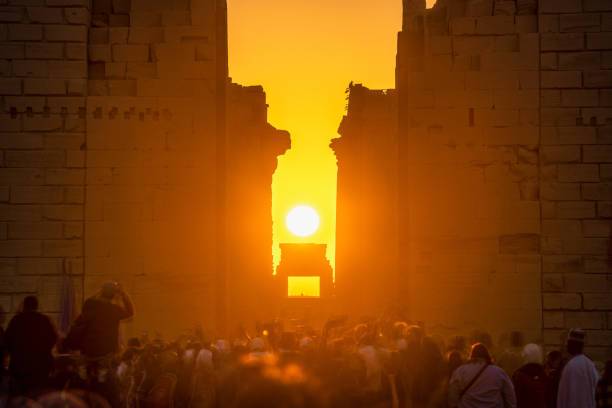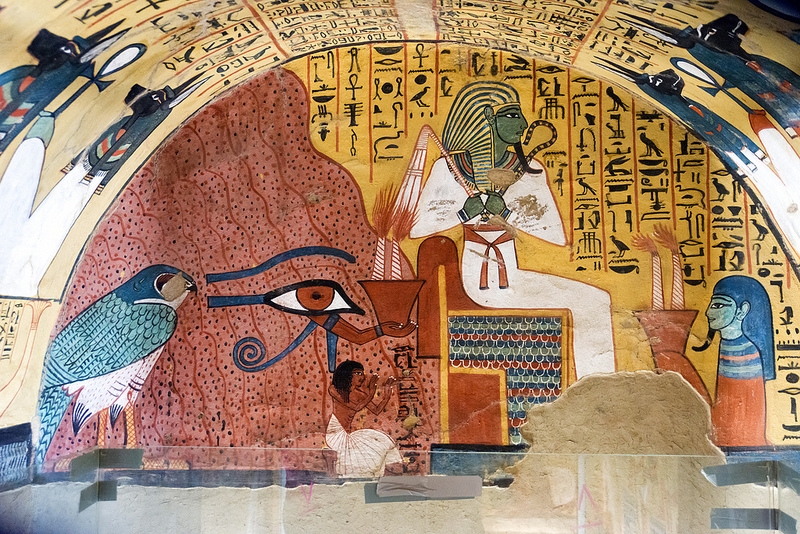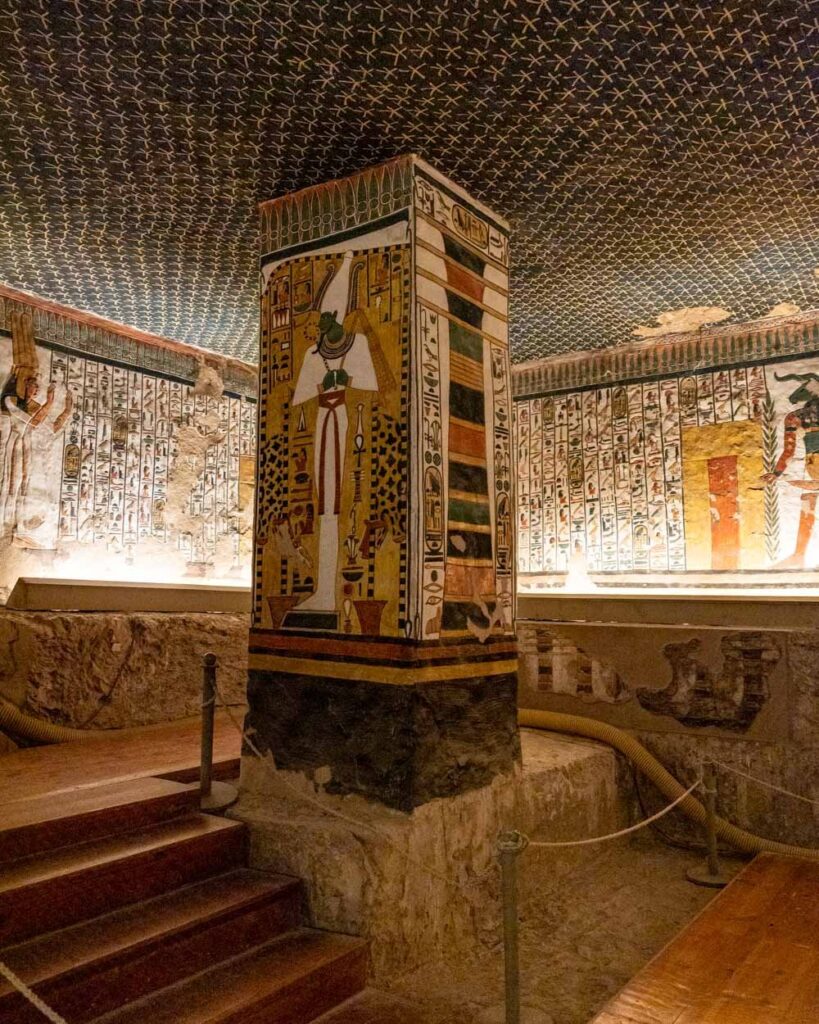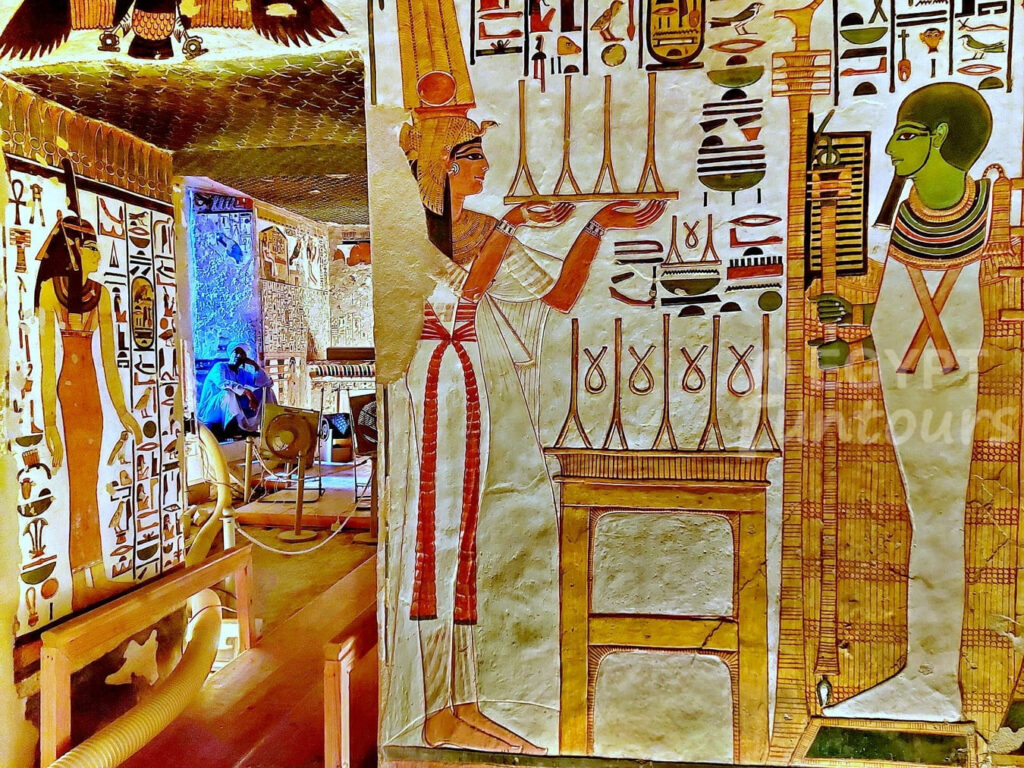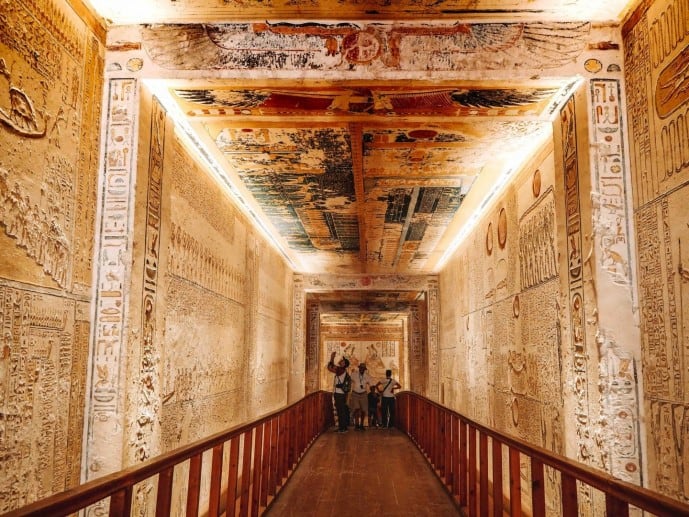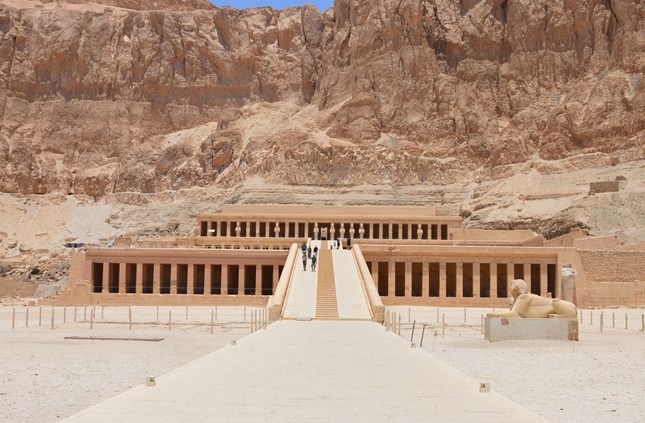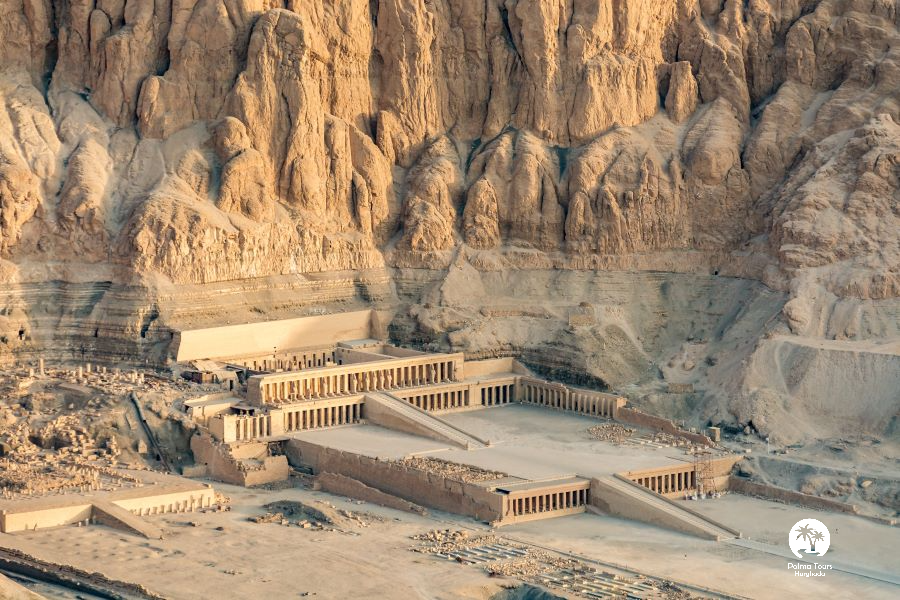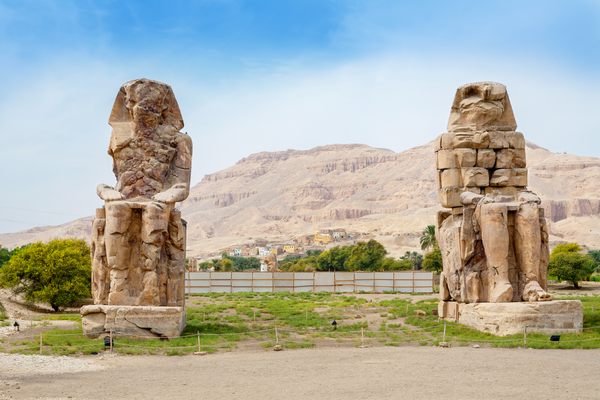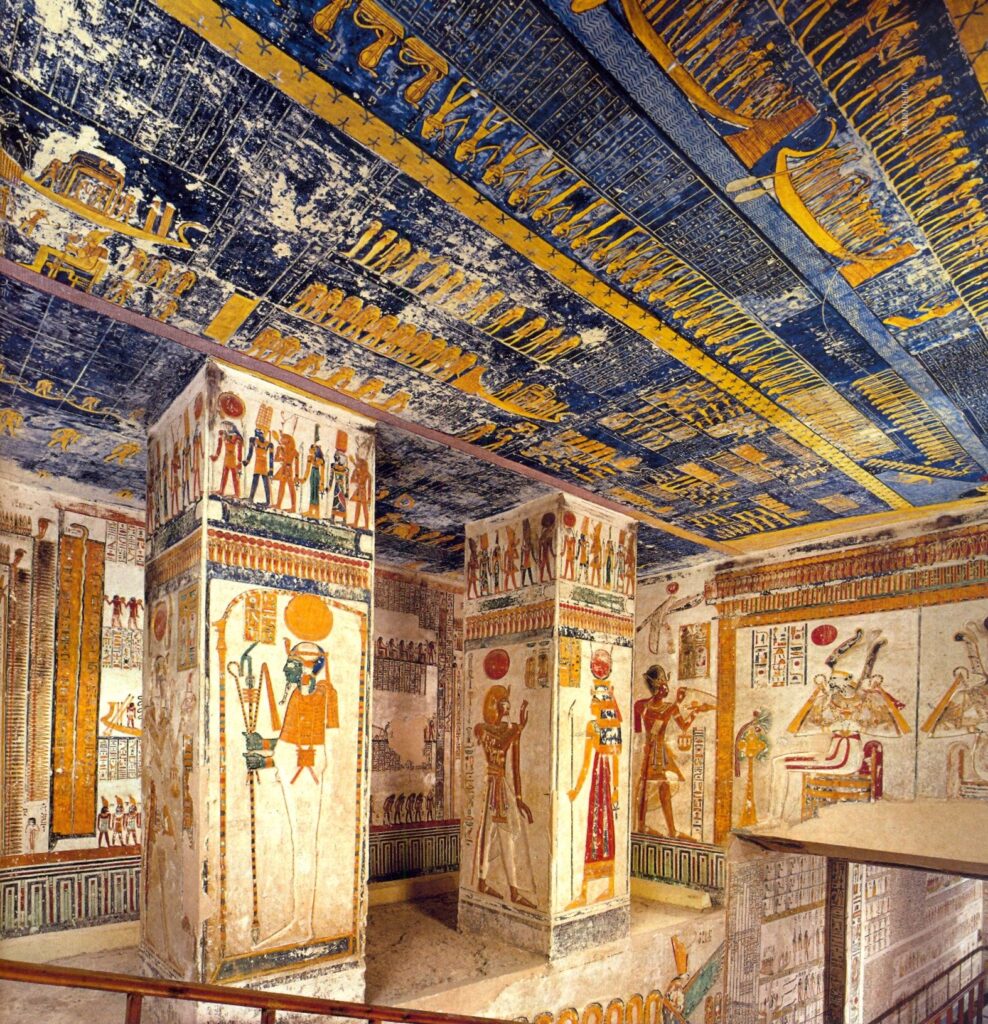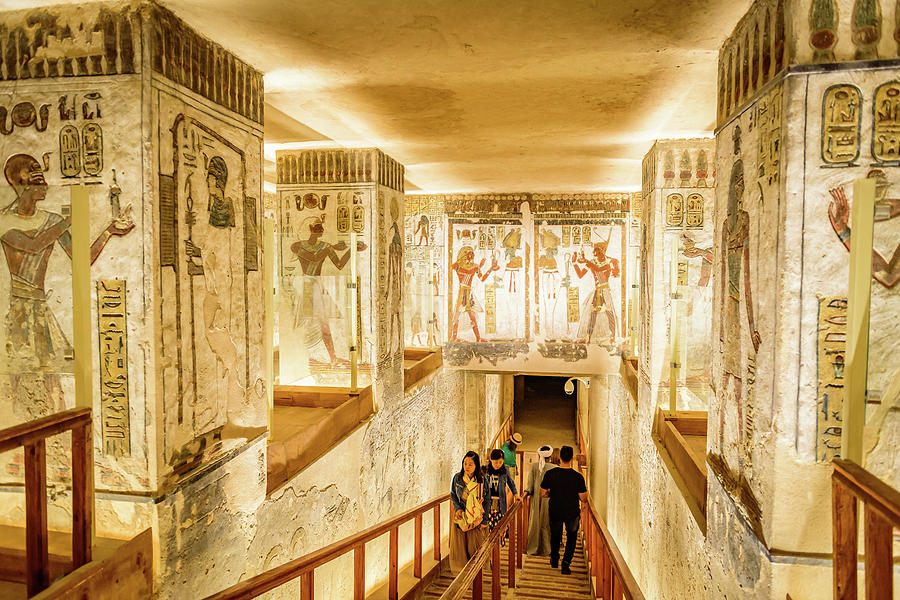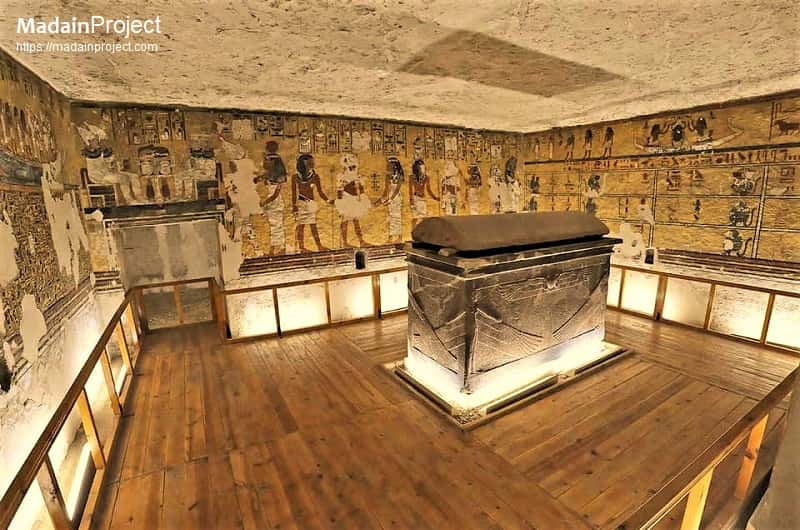Visit the Esna Temple, a well-preserved jewel and an example of Ptolemaic architecture. Only the pronaos (portico), dedicated to Khnum (god of the source of the Nile and creator of the human bodies) and his wife Menhit (Lioness Goddess of war and massacres), has been excavated; the rest of the temple rests underneath the city of Esna. Twenty-four magnificent columns hold the temple ceiling with exceptionally well-carved palm and lotus floral capitals. The ceiling itself is adorned with the ancient Egyptian interpretation of the constellations, moon phases and astronomical figures. A unique feature: there is an ongoing restoration and cleaning project of the temple, and it is lovely to see the professionals at work during your visit.
The construction of the Edfu Temple started on 23 August 237 BC under Ptolemy III and initially contained only a pillared hall, two diagonal halls, and a sanctuary surrounded by chapels. We know this because the Edfu Temple is one of the best-preserved shrines in Egypt. The walls provide details of the construction, the religious myths and the family history of the God Horus, to whom the temple was dedicated. The Edfu Temple is deeply connected to the Hathor Temple in Denderah and was the center of prominent festivals. Horus was married to his aunt Hathor each year, and she travelled south from Denderah to visit Horus in Edfu. A reconstruction of the Sacred Bark is on display in the Holy Sanctuary. In 1860, Auguste Mariette, a French Egyptologist, identified the top of the temples' pylons and began freeing the Edfu temple from the sands. It is nearly intact and an excellent example of an ancient Egyptian temple.
We drive south to Kom Ombo to visit the famous double temple dedicated to Haroeris ("Horus the Elder") and Sobek. Although the temple is badly damaged due to Nile flooding and earthquakes, enough remains to admire the ancient arts. Some remarkable scenes on the temple walls will be explained, like the portrayal of surgical instruments that look extraordinarily like the ones we use today. Furthermore, a beautiful depiction of an ancient calendar shows the hieroglyph figures for the days of the month and the seasons. It might be a calendar for crops or the daily offerings to the Gods. Of course, you also visit the Crocodile Museum with its mummified crocodiles found in the temple area.
For the transfer part of the day, you will be picked up from your Luxor accommodation and dropped off at your Aswan accommodation. The total trip will be around 10 hours.
